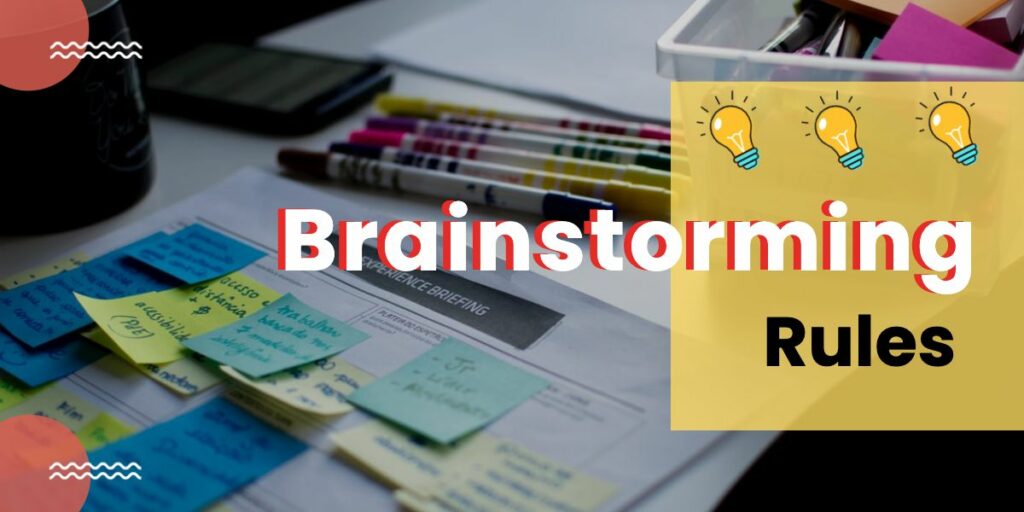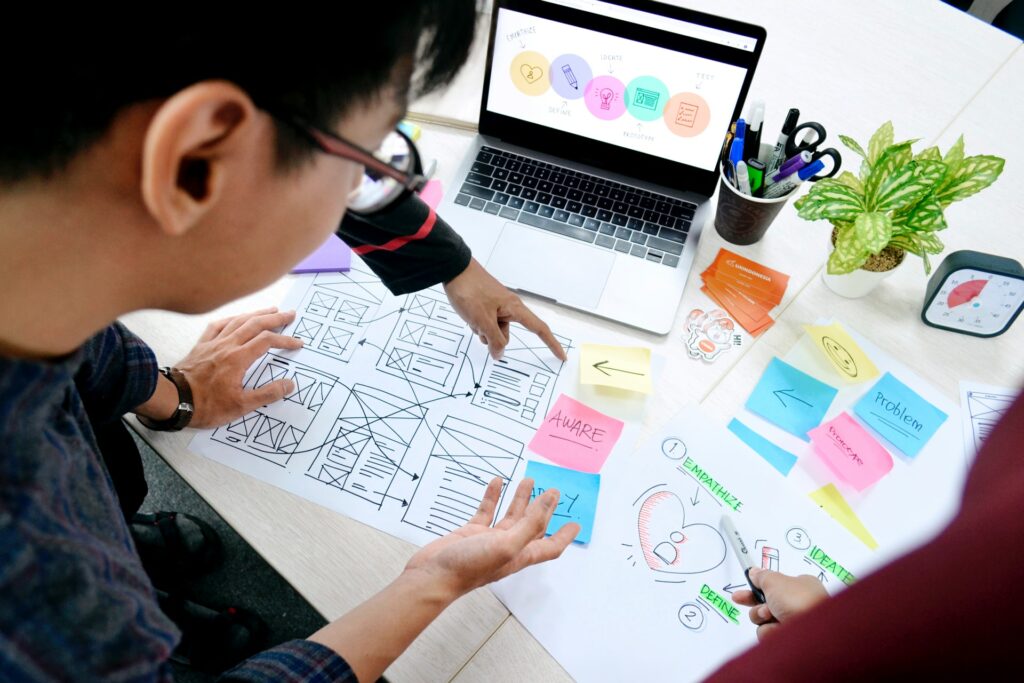Learn about some of the most popular activities and exercises for design thinking.
Here at Innovation Training, we’ve spent over a decade studying and applying design thinking techniques to help organizations and individuals create real, innovative change. Design thinking can help you figure out new solutions to grow and improve old processes and practices by doing things in better ways. While the steps in the design thinking process have remained roughly the same, new activities and exercises are being created to help individuals apply this mindset and unlock the innovations they need to be successful. In this blog post, we’ll share some of the most popular design thinking exercises and activities, validated by research shared in a popular design thinking book, the Design Thinking Toolbox.
1. Interviews
Interviews are an effective early-stage understanding and observing process that can help you gather insights into the problem your users are encountering, why it’s a problem for them, and how it’s impacting their life. You can better understand who the end user is and how to cater a solution directly to their needs and interests. One of the simplest ways to do this is to simply talk with your users and potential users. These interviews will be invaluable as you begin to piece together this information, ideate potential solutions, and later on build rough prototypes of some of these ideas.
2. Jobs to be done
Jobs to Be Done (or JTBD) is a theory about consumer action in which customers are purchasing products and services to get a specific “job” done in their life. Ultimately, the JTBD framework can help you better understand your users and create a more compelling customer experience for them. Learn more about JTBD theory in our article and then check out these top JTBD books for even more learning opportunities. JTBD is a pretty big framework in it’s own right but some key activities from this approach (like identifying the job to be done your user wants/needs to do) help you in moving from the empathy to define stage of design thinking.
3. Customer journey maps

Customer journey maps provide a roadmap visual of the customer’s experience – from initial contact to each point of engagement in the long-term relationship. This mapping tool can be used to identify critical interactions a customer has with your organization that may need improvement or modification to improve the experience. Learn about customer journey maps in our introductory guide and more advanced training article, and then consider using one of these customer journey map templates from Miro to use this technique in your own design thinking project.
4. Empathy mapping
As you may know, empathy plays a critical role in design thinking. Our ability to understand the problems and realities of the users we are designing for ensures that we are able to create the right solution to overcome their challenge. Empathy mapping is a way to visualize everything you know about your user. This information can be gathered through interviews, observations, and other sources to create a 4 quadrant grid that explores what your user is saying, thinking, doing, and feeling.
5. Personas
Personas are fictional characters that represent a type of user or customer. This fictional character is created based on an understanding of what you’ve learned from your real customers and users, and can be used to better understand their needs, behaviors, experiences, and goals. These persona templates from Mural can help you build out these characterizations.
6. Brainstorming

Brainstorming is one of the most used ideation techniques to develop ideas to overcome innovation challenges. Brainstorming rules can help you to structure your session. There are many different brainstorming activities and tools out there to help you ideate quickly and generate many more ideas than ever thought possible. Refer to our guide for different brainstorming templates that can be used in groups or alone.
7. SCAMPER
SCAMPER is an acronym that actually combines multiple design thinking ideation techniques into one, including adapting ideas to solve a different problem, eliminating inefficient processes, and reversing direction to do things the other way around. Learn more about SCAMPER and find templates to get started with this technique in our guide.
8. Prototyping
Once you have an idea, it’s time to prototype and test it to see if it may be an appropriate solution for your challenge. Prototypes can be rough designs of your idea that can be shown to get feedback and see how the user might interact with it. Initial prototypes may be as simple as a drawing on a piece of paper or a digital wireframe.
9. Testing with users
Another popular way to test your ideas in action is to utilize your users (or those who may become users in the future) to better understand the usability and functionality of your solution. Testing a smaller or less advanced version of the solution with your users allows you to make in-the-moment changes to better fulfill their needs before you spend the full time/energy/money needed to reach a more final version of the solution.
Friend groups, current customers, or relatives can be an easy way to test your solution and see possible uses or issues with the product beforehand. They are easy people to interview first.
Final Thoughts on Design Thinking Exercises and Activities
Design thinking is a tried-and-true method of developing innovative and useful solutions to complex challenges that may be impacting your organization or personal life. There are many other innovation activities and exercises for innovation out there that can help you take this methodology and apply it to your own unique challenge or problem. These are just a few of the most popular tools to get started with design thinking – but certainly not the only effective ones out there! If you are interested in learning more or getting help developing a custom innovation workshop or design thinking training session, Innovation Training can help. Contact us online today to learn how to get started.
